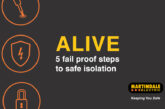
David Sweetman, Group Marketing & Business Development Director at Di-LOG, takes a look at the current and future landscape for EV adoption and why the company’s latest test equipment introductions will help installers to keep up with the demand.
The continued growth of electric vehicles is at a record level. At the same time this is adding immense pressure to the UK population to meet the growing demand for increased EV charging infrastructure.
With new building regulations coming into effect from mid-June, it is stipulated that every new dwelling with associated parking, new residential properties with more than ten parking spaces, and residential buildings undergoing major renovation will need to have fitted at least one charge point. The update in building regulations also covers commercial applications, including change of occupancy.
According to Zap-Map, one of the UK’s leading Apps for EV drivers, at the end of April 2022, there were 31,507 charging points across the UK, across 19,707 charging locations. This represents a 35% increase in the number of charging devices since April 2021. In April 2022, 1,213 new charging devices were added to the Zap-Map database.
These figures do not include the many chargepoints installed at home or at workplace locations, which are estimated to be more than 400,000.
Some of these chargepoints are available to the public in some form via community or visitor charging. (Information source: www.zap-map.com)
The next generation of testers
As one of the leading UK manufacturers of multifunctional electrical installation test equipment, Di-LOG continuously monitors new electrical safety equipment that enters the UK and worldwide market, analysing new safety features and developing crucial new testing techniques to keep our industry at the forefront of electrical safety.
With the demand for EV installation about to expand tenfold over the coming years, we felt that this sector should be key to our next generation of multifunctional testers. The new DL9100 Series MFT incorporates the DL9120 and DL9130EV.
Based on the current 18th Edition installation multifunction tester range, the DL9100 series MFT has a brand-new hardware and firmware platform to pave the way for some exciting features, incorporating a new user interface and continuing to maintain our simplistic and easy to use operational design.
A new test
A major addition to the range is the introduction of a Type B (Pure DC) RCD test which has paved the way for a host of tests specific to the EV and PV sectors, a fully auto-sensing intelligent high current Loop/PSCC test that will automatically detect if the user is conducting either a 2 wire or 3 wire test without the need to select. It incorporates a new RGB screen with colour changing screen alarms when specific triggers or warning are required, variable RCD test and a full secondary display for recording the result.
The flagship DL9130EV has been designed specifically for service engineers that currently offer, or are looking to add, EV installation as part of their electrical installation portfolio. The DL9130EV has many new and exciting features in addition to the DL9120, crucial to the safe verification of EVSE charge station installation including a 6mA pure DC test for RDC-DD verification. The unit will follow a pre-defined sequence comprising a full EV testing sequence for verifying the DC protection provided by the EV charger, combined with the testing required for AC protection of the sub-distribution board with Type A RCD protection.
All results are then recorded with the RGB colour changing screen indicating pre-set pass/fail parameters. With a press of one of the function buttons, you can switch between standard Auto RCD and Auto EV Test. No complex menu systems, or illogical sequences – just press and go!
Max power
A unique new feature added specifically to the DL9130EV is Rmax. This brand-new concept will automatically capture the maximum R1+R2 & R2 continuity test reading, registering the result on the secondary display for recording once the circuit continuity testing is complete.
One of our new user features is the addition of the Zmax function. Whilst performing a non-trip Earth Loop Test using our patented RCD-LOC Xpert Loop Technology, you can track your maximum Zs measurement by pressing the Zmax function key before recording the maximum measurement on the secondary display.
Many European spec RCDs are appearing on the UK market, and from time-to-time you may be in a situation where you need to program in bespoke RCD values to complete the manufacturer’s required test. The new variable RDC test feature enables the user to customise bespoke RCD mA values to complete the tests required.
The DLEV1 is a universal EVSE Charge Station Adaptor Kit that will simulate the Proximity Pilot (PP) States and Control Pilot (CP) States required to energise a free-standing or wall-mounted EV charger.
Supplied with a type 1 and type 2 connector plug specifically designed for testing, the DLEV1 kit will also simulate PE Pre-test, CP Error “E” and PE Error with the added feature of CP signal output and load connection.
The unit has a 13A socket for MFT mains lead or can be used for inline load connection. There are also 4mm input terminals for single or 3-phase connections.
All the Di-LOG EV range of products can be purchased separately or in kit form, offering additional savings.
To visit DI-LOG’s specially designed EV range information page, containing videos and full product specs, click here










